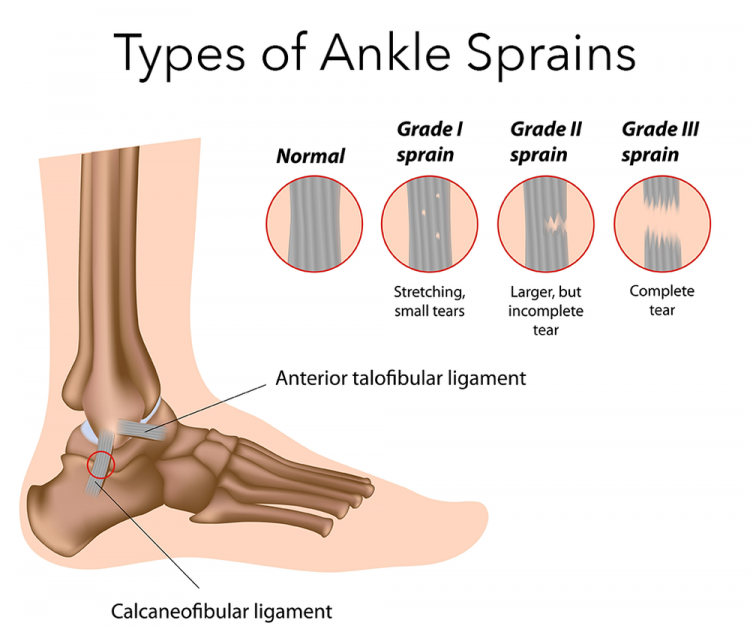Twisted your ankle? Give it time to heal

If you have ever twisted your ankle, you’ll know how agonizing that pain can be and how much the ankle can swell.
Many people come to me after twisting their ankle inwards having landed badly from a jump, tripped over a curb or just lost their footing on an uneven surface. It is a common injury, but thankfully it is usually minor and can heal without surgery. What you want to avoid is having it twist repeatedly afterward.
After a twist, you have most commonly damaged the anterior talofibular ligament of the ankle, which is the ligament at the front of the ankle, on the outside. Put your hand down on the bump on the outside of your ankle, that’s called the lateral malleolus, now run your finger a little bit forward, that’s where the anterior talofibular ligament is. This ligament is the key stabilizer of the ankle and so once it is twisted, the ankle may become unstable.
What I look for when I see a twisted ankle is the grade or degree of the sprain. Is it Grade 1 (a stretch), Grade 2 (a tear) or Grade 3 (a complete rupture)? Essentially, what we need to know is: Is the ankle stable or unstable? If it is stable after a stretch or small tear, we can treat it with ice, soft-tissue massage and ankle support. Ankles usually return to feeling pretty normal within a couple of weeks.
However, if the ankle is unstable after a more serious ligament tear, we will need to do a little more to help it heal, otherwise you are in danger of having the ankle twist again and again. This chronic instability is avoidable if specific treatments are started immediately after the injury. In these cases, often other ankle ligaments are also torn, which means that the bones around the ankle might have shifted out of place. The nerve supply to the injured ligaments may also be compromised. These nerves provide proprioception, or position sense, in effect telling the brain where the foot is in space. In the healing process, it is critical to retrain the ligaments to regain the neural connections required for a stable ankle.
In the past, ankle injuries were often treated with cast immobilization for six weeks or longer. Unfortunately this is not good for the healing process. The tissues that need to heal are weakened by the lack of normal motion and produce scar tissue instead of healthy tissue. It also compromises the healing of the nerves.
Instead, we use an ankle brace or taping combined with a great stabilization rehab program. There are specific ankle training exercises we have our patients do, which help stimulate the ligament to heal along the lines of stress in a normal fashion rather than just a scar. We sometimes use electrical stimulation, and we have a host of balance and proprioception exercises.
Every now and then (one in 500 or so ankle ligaments) we need to repair an unstable ankle surgically. This is because the ankle injury has caused more significant damage, sometimes the result of a single incident and sometimes caused over time by repeated twisted ankles. In these cases, I am able to sew the anterior ligament back into place using a technique I developed 20 years ago. It is an outpatient repair, which, when combined with a careful rehab program, has never failed to stabilize the unstable athletic ankle in our practice.
So remember, while ankle injuries are common and are usually minor, make sure you give your ankle the time and attention it needs to heal. This will help you avoid developing a chronically unstable ankle that gives out repeatedly.
